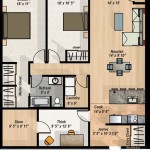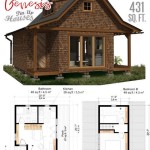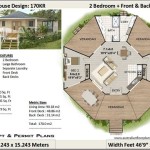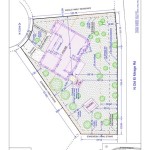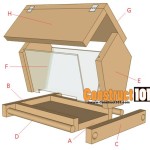How to Put Dimensions on a Floor Plan in Revit
Dimensions are an essential part of any floor plan, as they provide the necessary information to ensure that the plan is accurate and buildable. In Revit, there are several different ways to add dimensions to a floor plan, each with its own advantages and disadvantages. In this article, we will discuss the different methods of adding dimensions to a floor plan in Revit, and we will provide step-by-step instructions on how to use each method.
Method 1: Using the Dimension Tool
The Dimension tool is the most basic method of adding dimensions to a floor plan in Revit. To use the Dimension tool, simply select the two points that you want to dimension, and then click on the Dimension tool in the ribbon. The Dimension tool will automatically create a dimension line between the two points, and you can then adjust the properties of the dimension line as needed.
Method 2: Using the Quick Dimensions Tool
The Quick Dimensions tool is a more efficient way to add dimensions to a floor plan in Revit. To use the Quick Dimensions tool, simply hover your mouse over the edge of an object, and then click on the Quick Dimensions tool in the ribbon. The Quick Dimensions tool will automatically create a dimension line between the edge of the object and the nearest reference plane. You can then adjust the properties of the dimension line as needed.
Method 3: Using the Dimension Style Manager
The Dimension Style Manager allows you to control the appearance of all of the dimensions in your Revit model. To open the Dimension Style Manager, click on the Manage tab in the ribbon, and then click on the Dimension Styles button. The Dimension Style Manager will allow you to change the font, size, and color of the dimension text, as well as the appearance of the dimension lines and arrowheads.
Method 4: Using the Dimension Equation Editor
The Dimension Equation Editor allows you to create custom dimension equations. This can be useful for creating dimensions that are not available using the standard Dimension tool. To open the Dimension Equation Editor, right-click on a dimension line and then select the Edit Equation option. The Dimension Equation Editor will allow you to enter a custom equation that will be used to calculate the value of the dimension.
Conclusion
Dimensions are an essential part of any floor plan, and there are several different ways to add dimensions to a floor plan in Revit. The method that you choose will depend on the specific needs of your project. By following the steps outlined in this article, you can easily add dimensions to your Revit floor plans.

Help Part 11 Add Dimensions Autodesk

Dimensions In Revit Beginner To Pro Tutorial

Dimensions In Revit Beginner To Pro Tutorial

Revit Tutorial Dimensioning Floor Plan

14 Beginner Tips To Create A Floor Plan In Revit Pure

14 Beginner Tips To Create A Floor Plan In Revit Pure

14 Beginner Tips To Create A Floor Plan In Revit Design Ideas For The Built World

14 Beginner Tips To Create A Floor Plan In Revit Pure

Revit Architecture How To Dimension Plans Properly Bim Modeling

Multi Level First Floor Plan View Autodesk Community Revit S
Related Posts

